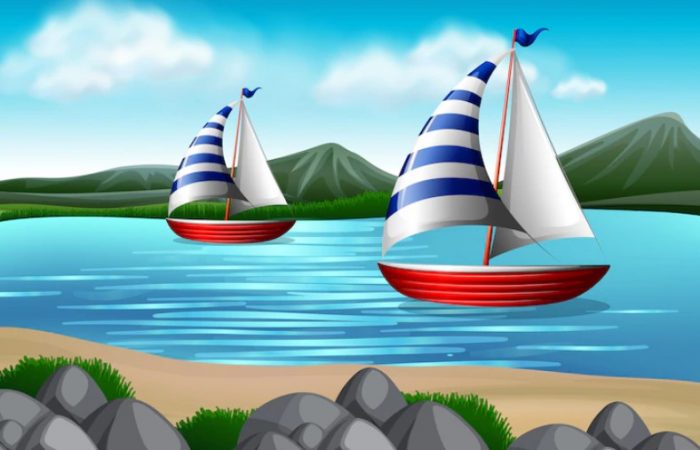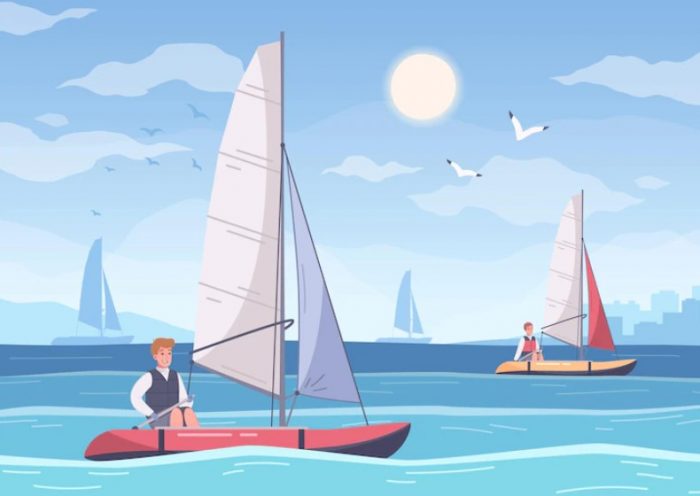The overtaking boat must give way to the vessel being overtaken either by slowing down, stopping, or changing course. The ship to be overtaken must maintain its initial course and speed unless the give-way vessel isn’t taking appropriate action.
Key Takeaways
- If the boat being overtaken has to take action, it needs to ensure it doesn’t turn toward the overtaking vessel or cross in front of it
- To understand overtaking, it is essential to understand the names given to the boats clearly; the one overtaking and the one being overtaken
- The vessel that wants to overtake is named the give-way vessel, while the one to be overtaken is the stand-on vessel
- Nautical rules govern movement on the sea and help educate sea users on what to do in respective situations
Nautical rules on the road

Just as drivers and pilots are given rules that govern how they should manage their vehicles and planes, sea and marine drivers are also regulated by some rules they should observe. If not, they are endangering the lives of those on the vessel and may be punished by law.
Nautical rules govern movement on the sea and any other water body. These rules help educate sea users on what to do in respective situations. They also help to guide vessel commanders. Below are some of the crucial ones
1. How to avoid collisions when using waterways
This falls under the Collisions regulations, which mention that all vessel commanders should carefully have a proper lookout at any time and should never assume this. With a good lookout, the chances of collisions are averagely reduced.
The vessel operators should also make sure that they always have a clear view of the waterways that are being navigated. This draws the attention that navigation will be difficult unless a vessel operator is well-educated o the rules and regulations of the seaways. However, if the laws are well followed, severe collision cases will be reported.
2. The Collision Regulations
Man is prone to making an error. Therefore, accidents are normal and may result from a natural outcome. However, in case of an accident, in this case, a collision between two boats, what is the next step?
Running away is a crime; however, staying and helping is the best thing. You may start by assisting those injured. You should keep in mind that, even if you are helping, you should not endanger your life or your passengers when helping. It may be true that the accident was your fault; however, risking your life could make the situation more critical.
It is also essential that you give crucial details such as your name, address, and your vessel’s number in writing to the owner of any damaged property. Accidents happen, but punishment is to be served to make you more careful the next time.
3. Overtaking another vessel
Overtaking is not prohibited. However, when overtaking the vessel operator should be very careful. The necessary stated rules should be followed to protect boats from any incidents of collisions.
There are two main ways to have a successful overtaking:
- The overtaking vessel should keep off the way of the boat being overtaken. This flows both ways; if the stand-on vessel notices the give-way vessel, it will act accordingly; the same applies to the give-way vessel. If communication can be made prior, this can also be important to both boats.
- Any change of either course or alteration of speed should be avoided as it may lead to a collision. Even if it is slightly minimal, any change in speed should be avoided. The stand-on vessel can slow down in some instances.
- For power-driven vessels, the vessel that has the other on its wrong side should avoid the way of the other; it should also avoid crossing the other boat at all costs. In cases where another is approaching a powerboat on the port side, maintaining the initial course would serve better.
4. The meeting situation
None of the vessels is the stand-on or the give way in this situation. Therefore each should keep up with the speed and course they were initially navigating through.
What the give-way vessel should always do
In any situation, this vessel should always keep out of the way of a stand-on vessel. The earlier, the better; under no circumstance should the two vessels be close.
What the stand-on vessel should always do
The stand-on vessel should at all-time maintain its course and speed. This is different for the give-way boat as it can change both course and speed when it is clear that the stand-on is not per the rule. This will prevent any chances of colliding.
Power-driven Vessels
For the power-driven vessels, they should at all times keep out of the way of;
- A vessel that seems to be out of command
- A ship with restrictions to maneuver
- A fishing boat that has its nets hauled
- A sailing boat
This will save the power-driven vessel from any accidents and allow the other boat to navigate if it is capable unless the ship is not under any command.
A sailing boat, on the other hand, should always keep out of the way of;
- A vessel that seems to be lacking command
- A ship with maneuvering restrictions
- A fishing boat with hauled nets
As mentioned earlier, communication is also essential in the sea when different vessels are navigating. There are various forms that ships use to communicate with each other. This can be when they pass along when they are about to meet or even when the vessel operators require some assistance. As long as the message is passed correctly, there is no doubt that the required information will be securely passed.
The different forms of passing information mainly involve hooting from the vessels. Examples include;
- In a meeting situation, one blast would mean that the vessel sounding the blast intends to alter its course to the starboard. It is critical to recognize the number of blows clearly to get the correct information.
- On the other hand, two blasts mean that the vessel sounding the blast intends to alter its course but toward the port. The other boat can, therefore, act accordingly.
- Three blasts in a row mean that the vessel is backing up or operating on astern propulsion. The ship on target to receive the message should make way for the other boat to move.
- Five or more short but rapid blasts are signs of danger or warning. They can also be a sign of doubt where one of the vessel operators did not get the initially passed message. The other vessel should therefore sound the message again. If the message is still not given across, another form of communication such as the radio should be used. At this time, the vessels should maintain the lowest speed and should not change their courses at any given circumstance. The operators should also ensure that they are correctly viewing the waterway.
- In case of one prolonged blast from a vessel, it means it is trying to warn other ships on the sea. It means that there is an unseen vessel in the waterway. The vessels that receive the information should respond by prolonged blasts.
Who has the right of way, a sailboat or a powerboat?

Sailboats that are under sail have the right over most of the reactional powerboats. This is because they are assumed to have more mobility than the rest of the vessels. Unlike other ships, its mobility is also critical as it cannot be turned at any given time. It requires a process that needs to be initialized in advance and can, therefore, not be conducted suddenly.
Final word
Handling vessels is not as easy as the vessel operators on water bodies make it appear. It needs proper understanding, being very cautious and accurate, and communicating well. However, with appropriate training in vessel handling, all the above have been made possible, and skillful vessel operators have been made to fit the task.
References:
- https://www.boatsafe.com/when-one-boat-is-overtaking-another-which-boat-must-give-way/
- https://www.quora.com/One-boat-is-overtaking-another-Which-boat-must-give-way
- https://www.boat-ed.com/canada/studyGuide/Power-Driven-Vessel-Encountering-Power-Driven-Vessel/10119902_114047/

Rockey is a kayaking enthusiast who has been kayaking with a local group for the last five years. He loves using kayaks while out on outings on the water or camping when the friends want to have a BBQ party somewhere on the bank of a local lake. More About James R Rockey at About Page Here: Authors
Based on his experiences with the different types of kayaks, he is sharing his opinion about kayaking tricks and required gears so that a beginner can get started right away.
Find his team on Twitter here. Happy reading!
